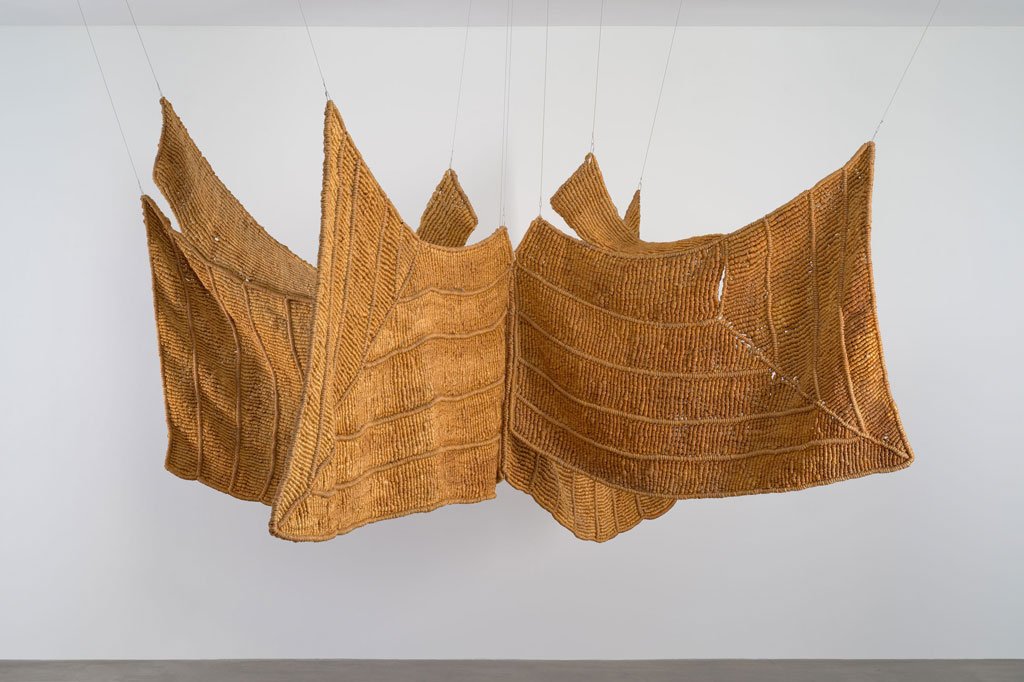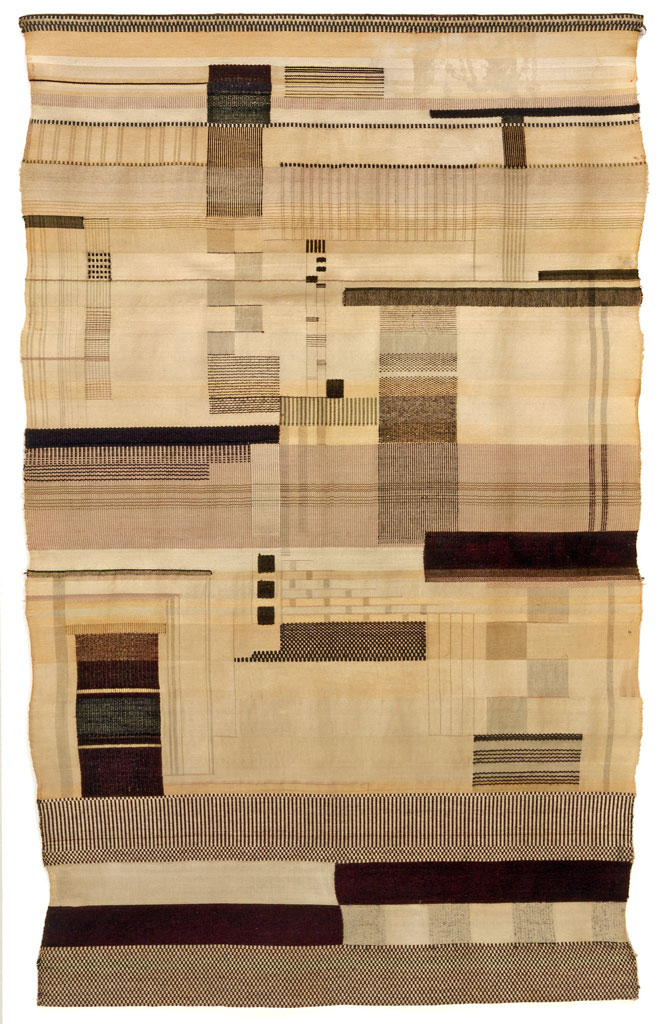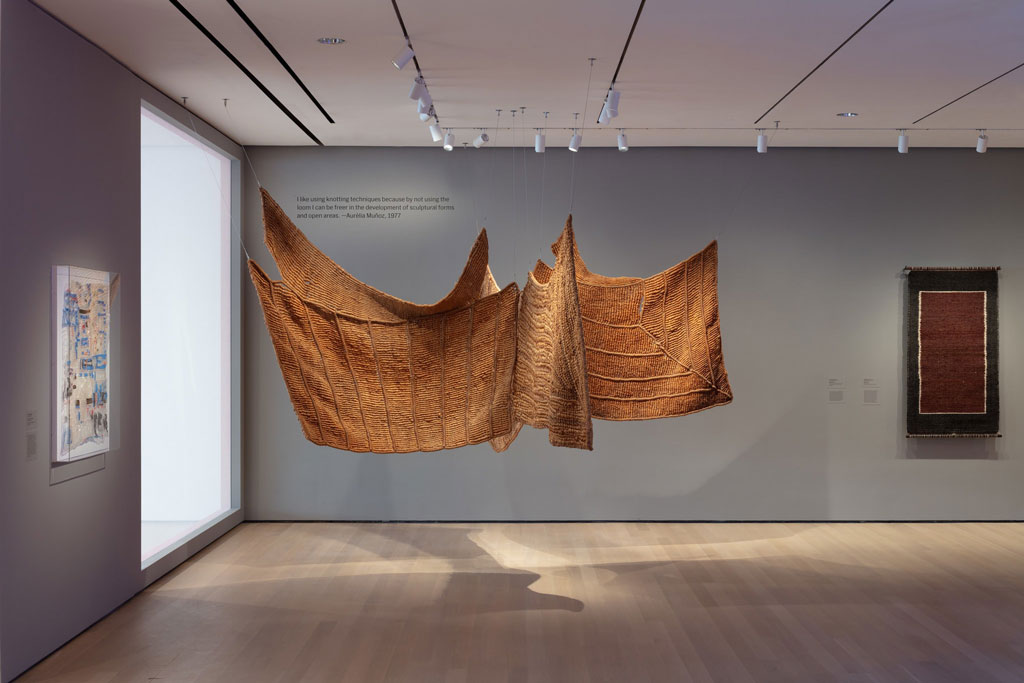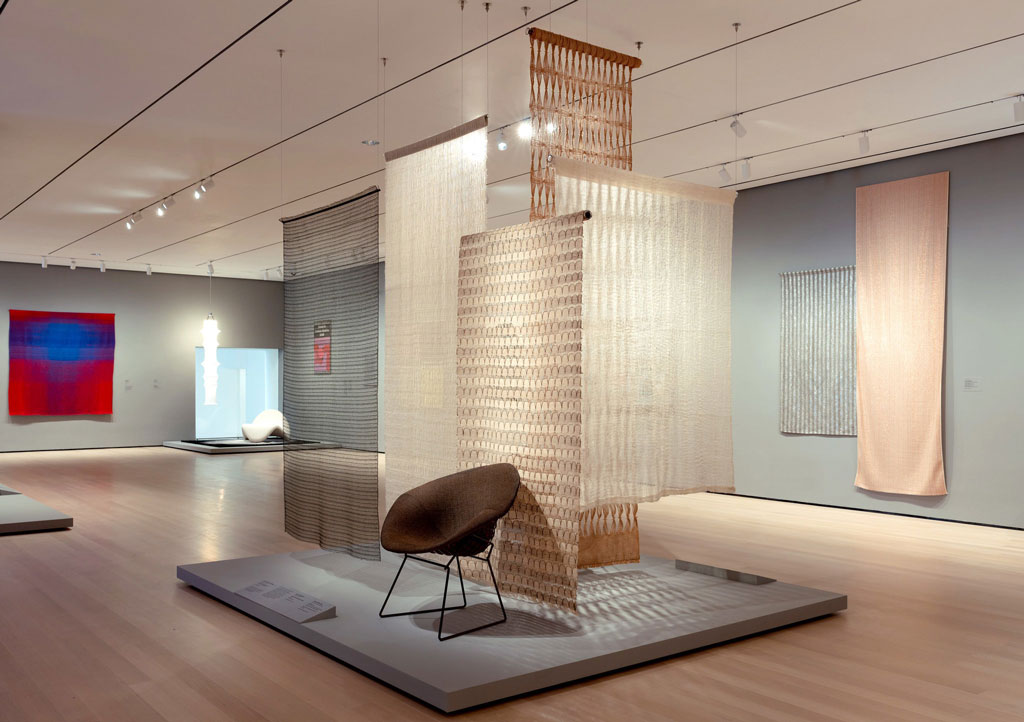ART-PRESENTATION: Taking a Thread for a Walk
 True to its title, this exhibition takes a thread for a walk among ancient textile traditions, early-20th Century design reform movements, and industrial materials and production methods. Featuring adventurous combinations of natural and synthetic fibers and spatially dynamic pieces that mark the emergence of more a sculptural approach to textile art beginning in the 1960s, this exhibition highlights the fluid expressivity of the medium.
True to its title, this exhibition takes a thread for a walk among ancient textile traditions, early-20th Century design reform movements, and industrial materials and production methods. Featuring adventurous combinations of natural and synthetic fibers and spatially dynamic pieces that mark the emergence of more a sculptural approach to textile art beginning in the 1960s, this exhibition highlights the fluid expressivity of the medium.
By Efi Michalarou
Photo: MoMA Archive

Like all the opening exhibitions at the new MoMA, “Taking a Thread for a Walk” draws almost entirely on the museum’s deep holdings. The exhibition takes its title from a famous admonition by Paul Klee, the artist and Bauhaus instructor, to learn the fundamentals of drawing by “taking a line for a walk”. At the multidisciplinary Bauhaus, that lesson extended to the design classes, where Anni Albers, most notably, translated the reforming spirit of the new academy to textile design. The exhibition “Taking a Thread for a Walk” includes not only Albers’s tapestries, gouaches, screenprints and drapery material from the 1920s to the 1980s, but also an entire loom. Less familiar than Albers’s weavings, and just as compelling, is a syncopated wall hanging of wool, silk and metal thread from 1924 by Gunta Stölzl, the Bauhaus’s only female master. Soon innovations in textile design moved from the artisan’s studio to the industrial factory. Designers like Harry Bertoia and Pierre Paulin relied on new elastic fabrics, stretched across metal frames, to create chairs. At the same time, fiber artists began to explore the sculptural possibilities of weaving, creating gorgeous but long misunderstood works that dissolved borders of art, craft and design. The Polish artist Magdalena Abakanowicz commands an entire wall with “Yellow Abakan” (1967-68), a weaving of coarse-grained, fraying yellow sisal suspended like a jacket on a hook. Sheila Hicks, who learned weaving techniques from Anni Albers at the Yale School of Art, is here with two glorious, recently acquired sculptures of beige and coral linen, bundled like ponytails and heaped like doubloons. Gunta Stölzl’s affinity for weaving and textiles stood her in such good stead that she was placed in charge of the weaving workshop at the Bauhaus in Dessau, first as a master of works and ultimately as its head. Ed Rossbach, a pioneer in the fiber-arts movement, Experimented with nontraditional textile materials in artworks and often used foil, plastic bags, Mylar, twigs, staples and twine in his pieces. He was born in Edison Park, Ill., earned a bachelor’s degree in painting and design from the University of Washington in Seattle in 1940 and received a master’s degree in art education from Teachers College at Columbia University in 1941. He was a professor emeritus of design at the University of California at Berkeley, where he taught for 29 years. Aurèlia Munoz is considered one of the most important figures of the current called “Nouvelle Tapisserie” or “Fiber art”. She stands out for her constant research to convert wall flat pieces into large three-dimensional pieces hung in space, in search of the essence and of the formal perfection. She chooses textile techniques to express her imagery, especially the simplest ones that move away from the ornament and do not distract from the purity of the concept, uniform knots, worked vertically and horizontally, which she calls macramé, an Arabic word that means noble knot.Throughout her career, she was evolving towards the creation of a style which combined her own techniques. Her early experiments with textile, after producing her first printed fabrics, were with patchwork. This technique caused her language to become increasingly abstract. Embroidery, unlike other techniques, gave her total freedom, with no limitations of machinery or form. She began to be interested in the concepts of space and volume, first as embroidered fictive expressions or small volumes, which her new technical researches into textile collages were to become small sculptures. Monika Correa belongs to a small group of Indian textile artists who has elevated weaving to fine art. While Correa’s earliest works were primarily pictorial, capturing the patterns, colours and textures of the natural world, over five decades, her tapestries have become increasingly more experimental and abstract.
Info: Curators: Juliet Kinchin and Andrew Gardner, MoMA, 11 West 53 Street, Manhattan, New York, Duration: 21/10/19-Spring 2020, Days & Hours: Mon-Thu & Sat-Sun 10:00-17:30, Fri 10:00-21:00, www.moma.org


